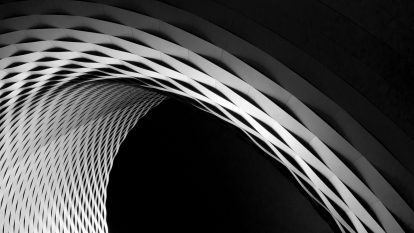

At the time of writing, the tech press is buzzing about Google Search testing a dark mode version of the internet’s biggest window on the world. This follows recent announcements that Microsoft Word’s dark mode is becoming even darker (dimming the canvas/page as well as the background), as is Twitter’s – moving from a dark blue to black.
Even the White House has used its inauguration refresh to welcome both Biden and a new dark mode, challenging the supremacy of the white webpage background and adding some fashionable flair to the .gov domain.
The most obvious reason for this increasing popularity is surely dark mode’s primary promise: reducing the impact of screen time on our eyes. According to one study, website and app visits have doubled since January 2020, with a tangible increase in children needing glasses over that time. While the idea that light text on a darker screen means less strain on the eyes is intuitive, there is evidence to suggest it’s actually detrimental when reading for a long period of time.
What is certainly true, however, is that dark mode reduces blue light which can make it easier to fall asleep after using screens before bed, and it reduces battery consumption (on OLED screens at least).
Could it be that when we need it most, in the chaos of Covid and enforced screen time, dark mode puts a lens of futurist nostalgia and magnetic comfort onto our digital lives?
While digital UIs have harnessed skeuomorphic, paper-like backgrounds for decades, the cultural memory of the terminal screen’s black-background punctuated with vivid colour endures through science fiction. From the cascading green glyphs of the Matrix to the bold pastel graphics of the computers in the Star Trek universe, the expansive possibilities of technology linger in those unknowable gaps.
The dark, dynamic interfaces of fictional worlds additionally imply a laser focus – whether that’s ‘hacking the mainframe’ or even risking life and limb on a Tron bike. In our oversaturated, dual-screening world, where decreasing attention spans have been compounded by the pandemic negatively impacting focus, it’s unsurprising that UI conventions implying concentration and purpose are appealing.
However, the bright white glare of the computer screen has often made late night work feel like an interrogation scene in which technology itself is asking why you always leave things till the last minute. Dark mode flips this script, giving images, videos, and graphical elements absorbing, prismatic depth.
Instead of being overwhelmed by the flood light of the screen, dark mode presents us with constellations of icons and content that reveal their finer details and pop against a background that doesn’t compete for attention. The ‘lanterns’ floating in a digital night sky make our elongating time spent in proximity to the screen more immersive and desirable. The ‘quieter’ visual experience asks us to lean in, and we’re far more inclined to oblige.
Whether presenting a digital world that’s vibrant and exciting, or calmly captivating, dark mode takes the familiar and imbues it with an appealing otherness. Everyday tasks take on a hint of tech’s utopian promise, and our portal of connection with the world beckons more than it overwhelms.
In the not too distant future (we hope), we will emerge from lockdown and dive back into our hectic lives. While dark mode might feel dulled in comparison to a newly stimulating environment, it likely signals an evolution in our interactions with devices. The absorption of dark mode may actually be a theme of more proximate interfaces to come. When smart glasses and neural interfaces become mainstream, their defaults are likely to be closer to lights in the darkness than text on the page.
If you’d like to chat to us about how cultural shifts are impacting UI design, or simply discuss the inclusion of the Tron bike as an interface, please get in touch.
For more like this straight to your inbox, sign up to our newsletter.